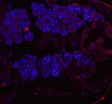(Press-News.org) In An Account of the Foxglove and Some of its Medical Uses, published in 1785, Sir William Withering cautioned readers that extracts from the plant foxglove, also called digitalis, was not a perfect drug. "Time will fix the real value upon this discovery," he wrote.
Now, more than 200 years later, researchers at the Stanford University School of Medicine have validated Withering's warning with the discovery that patients with atrial fibrillation — a rapid and irregular heart rhythm — who are treated with the digitalis-derivative digoxin are more likely to die than similar patients who received different treatments.
"The take-home point is to question whether people should really be on this drug," said the study's lead author, Mintu Turakhia, MD, assistant professor of cardiology at Stanford and director of cardiac electrophysiology at the Veterans Affairs Palo Alto Health Care System. "These data challenge the current guidelines."
The study will be published online Aug. 11 in the Journal of the American College of Cardiology, and will appear in the Aug. 19 print issue of the journal.
Turakhia and his team analyzed records from 122,465 patients who received a new diagnosis of atrial fibrillation from the U.S. Department of Veterans Affairs health-care system between 2003 and 2008. Doctors prescribed digoxin to 23 percent of the patients, and 70 percent of those patients were still on the drug one year later. Patients treated with digoxin were 1.2 times more likely to die than comparable patients prescribed other therapies. Patients receiving digoxin were more likely to die regardless of age; use of other drugs such as beta-blockers, amiodarone or warfarin; or the presence of other factors such as kidney disease, heart attack or heart failure, the study found.
"This is going to be as close to proof positive as we get because we may never have a randomized trial of this drug," Turakhia said. Pharmaceutical companies lack the incentive to finance studies on a long-accepted, generic drug.
Although recent studies showed mixed results, doctors and patients trusted digoxin because of its historic status, Turakhia said.
"There's an evidence gap," he said, adding that he launched the investigation because digoxin hasn't been rigorously tested like the many other atrial fibrillation treatment options.
The VA patient pool was predominantly male — only 1,980, or 1.6 percent, were female — and Turakhia has called for additional studies to establish whether the results are applicable to women as well.
Turakhia said many other drugs with better safety results are available to treat atrial fibrillation. Digoxin slows the heart rate but does not correct it to a normal rhythm. "We are not asserting this drug should never be used," he said. "However, in light of the many other drugs that can be used to slow down the heart rate in atrial fibrillation, patients and providers need to ask whether digoxin should be the treatment of choice when there are other, safer drugs. "
INFORMATION:
Other Stanford co-authors are Wolfgang Winkelmayer, MD, ScD, associate professor of nephrology; Susan Frayne, MD, professor of medicine; Ciaran Phibbs, PhD, associate professor of pediatrics; and Paul Heidenreich, MD, professor of cardiovascular medicine.
Researchers at the VA-Palo Alto, University of Pennsylvania, the Veterans Affairs Eastern Colorado Health Care System and the University of Colorado-Denver also contributed to the study.
This study was funded by a Veterans Health Services Research and Development Career Development Award, an American Heart Association National Scientist Development grant, a VA Health Services and Development MERIT Award, the National Institute for Diabetes and Digestive and Kidney Disease (grant 1R01DK095024) and the Center for Health Care Evaluation/Center for Innovation to Implementation.
Winkelmeyer is a member of the event adjudication committee for Medtronic, the data safety monitoring board for Medgenics, and the scientific advisory boards of Amgen, Bayer, GlaxoSmithKline, Keryx, Mitsubishi-Tanabe and Rockwell.
Information about Stanford's Department of Medicine, which also supported the work, is available at http://medicine.stanford.edu.
The Stanford University School of Medicine consistently ranks among the nation's top medical schools, integrating research, medical education, patient care and community service. For more news about the school, please visit http://mednews.stanford.edu. The medical school is part of Stanford Medicine, which includes Stanford Hospital & Clinics and Lucile Packard Children's Hospital Stanford. For information about all three, please visit http://stanfordmedicine.org/about/news.html.
Print media contact: Tracie White at (650) 723-7628 (traciew@stanford.edu)
Broadcast media contact: M.A. Malone at (650) 723-6912 (mamalone@stanford.edu)
Digoxin tied to increased risk of death in patients with atrial fibrillation
2014-08-11
ELSE PRESS RELEASES FROM THIS DATE:
Bioengineers make functional 3-D brain-like tissue model
2014-08-11
MEDFORD/SOMERVILLE, Mass. (August 11, 2014) --The human brain remains one of the least understood organs in the human body, because of its complexity and the difficulty of studying its physiology in the living body. Tufts University researchers today announced development of the first reported complex three-dimensional model made of brain-like cortical tissue that exhibits biochemical and electrophysiological responses and can function in the laboratory for months. The engineered tissue model offers new options for studying brain function, disease and trauma, and treatment. ...
Trapped atmospheric waves triggered more weather extremes
2014-08-11
It has been linked to a recently discovered mechanism: the trapping of giant waves in the atmosphere. A new data analysis now shows that such wave-trapping events are indeed on the rise.
"The large number of recent high-impact extreme weather events has struck and puzzled us," says Dim Coumou, lead author of the study conducted by a team of scientists from the Potsdam Institute for Climate Impact Research (PIK). "Of course we are warming our atmosphere by emitting CO2 from fossil fuels, but the increase in devastating heat waves in regions like Europe or the US seems ...
Preemies' gut bacteria may depend more on gestational age than environment
2014-08-11
Scientists believe babies are born with digestive systems containing few or no bacteria. Their guts then quickly become colonized by microbes — good and bad — as they nurse or take bottles, receive medication and even as they are passed from one adoring relative to another.
However, in infants born prematurely, researchers at Washington University School of Medicine in St. Louis have found that the population of bacteria in babies' gastrointestinal tracts may depend more on their biological makeup and gestational age at birth than on environmental factors. The scientists ...
Bioengineers create functional 3-D brain-like tissue
2014-08-11
Bioengineers have created three-dimensional brain-like tissue that functions like and has structural features similar to tissue in the rat brain and that can be kept alive in the lab for more than two months.
As a first demonstration of its potential, researchers used the brain-like tissue to study chemical and electrical changes that occur immediately following traumatic brain injury and, in a separate experiment, changes that occur in response to a drug. The tissue could provide a superior model for studying normal brain function as well as injury and disease, and ...
Scientists demonstrate long-sought drug candidate can halt tumor growth
2014-08-11
LA JOLLA, CA – August 11, 2014 – It's a trick any cat burglar knows: to open a locked door, slide a credit card past the latch.
Scientists at The Scripps Research Institute (TSRI) tried a similar strategy when they attempted to disrupt the function of MYC, a cancer regulator thought to be "undruggable." The researchers found that a credit card-like molecule they developed somehow moves in and disrupts the critical interactions between MYC and its binding partner.
The research, published the week of August 11 in the journal Proceedings of the National Academy of Sciences, ...
Elusive viral 'machine' architecture finally rendered
2014-08-11
VIDEO:
The new rendering of the protein-DNA complex, or machine, that the Lambda virus uses to insert its DNA into that of its E. coli host.
Click here for more information.
For half a century biologists have studied the way that the lambda virus parks DNA in the chromosome of a host E. coli bacterium and later extracts it as a model reaction of genetic recombination. But for all that time, they could never produce an overall depiction of the protein-DNA machines that carry out ...
Native bacteria block Wolbachia from being passed to mosquito progeny
2014-08-11
Native bacteria living inside mosquitoes prevent the insects from passing Wolbachia bacteria -- which can make the mosquitoes resistant to the malaria parasite -- to their offspring, according to a team of researchers.
The team found that Asaia, a type of bacteria that occurs naturally in Anopheles mosquitoes, blocks invasion of Wolbachia into the mosquitoes' germlines -- the cells that are passed on through successive generations of an organism -- thus stopping the insects from transmitting Wolbachia to their offspring.
"Wolbachia infects up to 70 percent of all known ...
Novel drug action against solid tumors explained
2014-08-11
(SACRAMENTO, Calif.) — Researchers at UC Davis, City of Hope, Taipai Medical University and National Health Research Institutes in Taiwan have discovered how a drug that deprives the cells of a key amino acid specifically kills cancer cells.
Their paper, published today in Proceedings of the Academy of Sciences, is the culmination of nearly a decade of research into the role of arginine – and its deprivation – in the generation of excessive autophagy, a process in which the cell dies by eating itself.
Study co-author Hsing-Jien Kung, a renowned cancer biologist and ...
Reconstructions show how some of the earliest animals lived -- and died
2014-08-11
VIDEO:
This is an animation of the growth and development of the extinct rangeomorph species Beothukis mistakenis, which lived during the Ediacaran Period from approximately 575 to 555 million years ago....
Click here for more information.
A bizarre group of uniquely shaped organisms known as rangeomorphs may have been some of the earliest animals to appear on Earth, uniquely suited to ocean conditions 575 million years ago. A new model devised by researchers at the University ...
A vaccine alternative protects mice against malaria
2014-08-11
A study led by Johns Hopkins Bloomberg School of Public Health researchers found that injecting a vaccine-like compound into mice was effective in protecting them from malaria. The findings suggest a potential new path toward the elusive goal of malaria immunization.
Mice, injected with a virus genetically altered to help the rodents create an antibody designed to fight the malaria parasite, produced high levels of the anti-malaria antibody. The approach, known as Vector immunoprophylaxis, or VIP, has shown promise in HIV studies but has never been tested with malaria, ...






